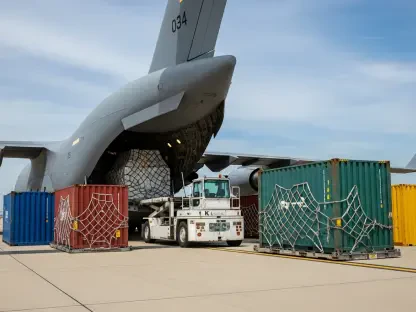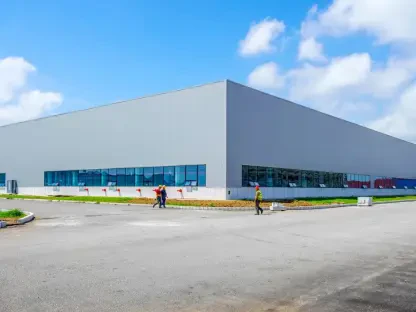In today’s fast-paced and competitive market, warehouses play a crucial role in ensuring the smooth flow of goods from manufacturers to consumers. As businesses strive to enhance operational efficiency and security, advanced video analytics have emerged as a transformative technology. This article delves into the key benefits of integrating video analytics into warehouse management, highlighting how it can address common challenges, streamline processes, and elevate overall practices through insightful data.
Mitigating Inventory Inaccuracies with Real-Time Monitoring
One of the primary issues in warehouse management is inventory inaccuracy, which can lead to significant operational inefficiencies. The application of advanced video analytics offers a sophisticated solution to these problems through real-time video validation. This cutting-edge technology enables constant monitoring of stock levels and product movements, thereby significantly reducing discrepancies and enhancing overall inventory accuracy.
For instance, QR-code detection analytics can be employed during product scanning for both entry and exit processes, providing a seamless method to cross-reference data with live video feeds. If a mismatch occurs—such as a product being scanned but not visible in the video feed—operators can flag it immediately for further investigation. This dual-layer approach not only mitigates errors but also fosters greater trust in the system. The combination of video feeds and QR-code validation ensures a higher degree of accuracy and reliability in inventory management, which is crucial for maintaining smooth operations and meeting customer expectations.
Enhancing Security through Advanced Surveillance Systems
Security is of utmost importance in warehouse operations, as theft and vandalism can result in substantial financial losses and operational downtimes. Advanced video analytics, when integrated with access logs and RFID technology, provide a robust framework for loss prevention. These systems offer immediate alerts and responses to unauthorized access, ensuring a safer environment for both personnel and valuable assets.
For example, if an unauthorized individual attempts to access a restricted area, the system instantly triggers an alert for security personnel while simultaneously recording the incident for future reference. This proactive approach not only deters potential theft but also provides invaluable evidence for any security breaches. The combination of real-time alerts and comprehensive incident recording establishes a more secure warehouse environment, enhancing both operational safety and asset protection.
Supporting Sustainability Goals in Warehouse Operations
As businesses increasingly prioritize sustainability, video analytics have emerged as a valuable tool in promoting green warehousing practices. Energy-efficient recording features in video analytics systems help reduce the carbon footprint of security operations, aligning seamlessly with corporate sustainability goals. People detection analytics further assist in monitoring energy usage by identifying when staff leave workspaces with lights still on, leading to considerable reductions in operational costs and environmental impact.
In addition, video analytics can monitor broader energy consumption patterns within warehouses. By closely analyzing footage, these systems can identify areas where energy is being wasted, such as lights left on in unoccupied spaces or machinery running unnecessarily. This data can then inform more intelligent decisions about energy management, thereby contributing to further cost reductions and minimizing environmental impact. Beyond the immediate operational benefits, these improvements position businesses as leaders in sustainability, an increasingly important differentiator in today’s market.
Optimizing Workflows for Increased Efficiency
Operational efficiency is a cornerstone for maintaining a competitive edge in the logistics industry. Video analytics provide requisite insights to identify bottlenecks and congestion points within workflows. Leveraging these data-driven insights, managers can optimize processes, reduce downtime, and significantly enhance productivity across the warehouse.
For instance, video analytics can track the movements of workers throughout the warehouse, identifying consistently congested areas. Managers can then use this information to optimize the layout or adjust workflows to alleviate these bottlenecks. This proactive strategy ensures that inefficiencies are swiftly addressed, leading to smoother operations and higher productivity levels. By continually optimizing workflows through the application of video analytics, warehouses can maintain a high level of operational efficiency, which is essential for staying competitive in an ever-evolving market.
Elevating Automated Processes in Warehouse Management
Integrating automated processes, such as pick-to-light systems, with video validation technology dramatically enhances warehouse operations. Motion detection analytics can monitor automated conveyor systems, ensuring that items are correctly sorted and directed. This minimizes human error and boosts efficiency, thereby reducing labor costs and improving the accuracy of order fulfillment.
For example, these systems can detect when an item leaves its intended path on a conveyor belt, allowing for immediate corrective action. This not only ensures the integrity of the sorting process but also significantly reduces the chances of misdirected or lost items. By combining automation with video validation, warehouses can achieve a higher level of operational efficiency and accuracy, which is crucial for maintaining customer satisfaction and loyalty.
Achieving Inventory Optimization through Predictive Analytics
An integrated reporting tool that leverages video analytics allows warehouses to optimize inventory levels more effectively. Predictive analytics can forecast stock requirements based on historical data, ensuring that warehouses are neither overstocked nor understocked. This optimizes inventory management, reducing both costs and inefficiencies.
For instance, a security system integrated with video analytics and Electronic Point of Sale (EPOS) technology can detect increased demand patterns for specific products and alert managers accordingly. This allows for proactive adjustments to inventory levels, preventing stockouts and ensuring that customer demand is always met promptly. The predictive capabilities offered by video analytics are a game-changer in inventory management, enabling warehouses to operate more efficiently and meet customer expectations more reliably.
Enhancing Supply Chain Visibility with Real-Time Data
Real-time warehouse monitoring enabled by video analytics significantly improves supply chain visibility. This enhanced visibility allows for better coordination among supply chain partners, leading to optimized efficiency and increased customer satisfaction. Cloud-based warehouse management systems further support this visibility by making data accessible to all relevant stakeholders.
Using advanced video analytics, stakeholders can access real-time data on order statuses and shipment tracking. This transparency fosters better collaboration across the supply chain, allowing for quicker decision-making and more efficient operations. By providing real-time visibility into the entire supply chain, video analytics help ensure that all parties are informed and aligned, resulting in improved service levels and higher customer satisfaction.
Increasing Workplace Safety and Compliance Standards
Workplace safety in warehouse environments is a critical concern, and advanced video analytics offer several features to significantly enhance safety standards. Real-time alerts for unsafe practices, for instance, help ensure that any potential hazards are addressed immediately, thereby reducing the risk of accidents.
For example, video analytics can monitor whether workers are using required personal protective equipment (PPE). If a worker fails to wear the necessary safety gear, the system triggers an alert for supervisors, ensuring compliance with safety protocols and minimizing workplace accident risks. Furthermore, continuous monitoring and data collection can streamline compliance with industry safety regulations, ensuring that warehouses meet the required standards. By fostering a safer work environment, video analytics not only protect employees but also reduce the likelihood of costly accidents and disruptions.
Data Visualization in Warehouse Management
Data visualization tools enhance the understanding of key warehouse performance metrics. By presenting complex data in an easily digestible format, these tools allow organizations to quickly identify trends and areas for improvement, thereby driving further operational efficiency.
For instance, dashboards can display real-time operational data, such as order processing times, inventory levels, and worker productivity. These visualizations offer immediate insights into warehouse performance, enabling managers to make informed decisions more quickly. The ability to visualize data in an interactive and intuitive manner ensures that all relevant stakeholders can easily interpret and act upon the information, ultimately contributing to more efficient and effective warehouse operations.
Expanding the Scope of Video Analytics in Warehouse Management
An innovative application of integrated video analytics in warehouse management is the detection of aggressive behavior among staff. Advanced algorithms analyze real-time video feeds to identify unusual movements or interactions that may indicate conflict or aggression, an essential feature for maintaining a safe and harmonious workplace.
For example, if two employees are engaged in a physical or verbal confrontation, the system can automatically alert security personnel to intervene before the situation escalates. This proactive approach not only enhances workplace safety but also helps maintain a positive work environment by quickly addressing and resolving conflicts. By leveraging the capabilities of video analytics to monitor employee behavior, warehouses can ensure a safer and more productive work environment.
Another valuable application is the detection of abandoned objects within the warehouse. If an item is left unattended for an extended period, the system triggers an alert to notify security or warehouse staff. This functionality is crucial for preventing potential hazards, such as tripping risks, and addressing security concerns related to unattended packages. By promptly identifying and addressing abandoned objects, warehouses can maintain a safer and more organized environment, contributing to overall operational efficiency and safety.
Conclusion
In the current fast-paced and competitive market landscape, warehouses are essential to ensuring the seamless flow of goods from manufacturers to end consumers. As companies seek to improve their operational efficiency and security measures, advanced video analytics have emerged as a game-changing technology. This innovation brings numerous benefits to warehouse management, addressing common issues, streamlining various processes, and improving overall practices by providing actionable insights through data.
Integrating video analytics into warehouse operations allows for enhanced monitoring capabilities, reducing the likelihood of errors and thereby increasing accuracy. It helps in tracking inventory and managing stock levels more effectively, which is crucial for meeting consumer demands promptly. Additionally, these systems can also enhance security by monitoring unauthorized access and ensuring compliance with safety protocols.
Furthermore, video analytics can help identify bottlenecks in workflow and suggest improvements, leading to optimized productivity. By leveraging data, businesses can make informed decisions, reduce operational costs, and ultimately deliver better service to their customers. As the market continues to evolve, the integration of this technology represents a significant step toward building smarter, more efficient warehouse operations.








